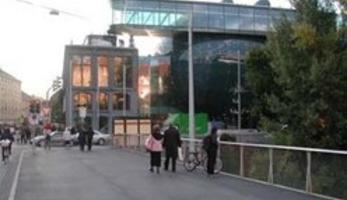Introducing strolling zones
Summary
Using an innovative approach to reduce car traffic and on-street parking, four zones were established in which pedestrians have priority but car use is not totally excluded.
Implementing sustainable mobility
Prior to measure implementation, various restrictions on car use had already been introduced. The city centre had pedestrian precincts and the city administration had devoted great efforts to promoting cycling. However, the districts neighbouring the pedestrian precincts were badly affected by heavy traffic, making accessibility to the pedestrian areas unsafe and unpleasant. With wider and more attractive pavements, the new strolling zones were designed to offer a good solution for pedestrians while also offering access to cyclists and not totally excluding car use.
Progress
Four strolling zones were created, with accompanying awareness-raising campaigns:
- Freiheitsplatz: A central spot around the monument is a strolling zone for pedestrians and features a café with terrace, which is very popular in summer. The square was also equipped with additional cycle racks.
- Karmeliterplatz: The redesign of the square was made possible due to the construction of a new underground car park, which greatly reduced the number of on-street parking spaces on Karmeliterplatz and the adjacent Freiheitsplatz.
- Obere Neutorgasse: In this case, an intensive public participation process was used for the first time in Graz, resulting in the creation of a list of recommendations in the form of a “citizens advisory opinion”.
- Kunsthaus area: The opening of the Kunsthaus (Museum of Contemporary Arts) made possible the redesign of the urban space around the building. This was integrated into one aesthetic concept with the redesign of the Neutorgasse and the opposite riverbank.
Outcomes
The establishment of strolling zones has improved quality of life in the city centre; increased the modal share of pedestrians; boosted commercial activity (bars, shops etc.); while reducing on-street parking, traffic noise and emissions.
- In the case of Neutorgasse, shop owners were severely opposed to a pedestrian zone and residents strongly in favour. With the help of the public participation process, a good compromise could be found.
- On the Karmeliterplatz and Freiheitsplatz, a longstanding conflict about the blocking of a street through the historical city centre was resolved by the introduction of the strolling zone.









